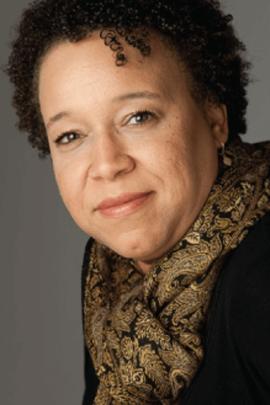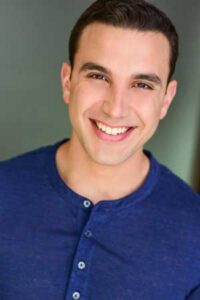If you’ve thought about hiring Native and Indigenous Voice Actors…

Now is the time to see what they can offer! In the past few years, Native representation has expanded in American pop culture. From Martin Scorcese’s film Killers of the Flower Moon, which brought a dark part of American history to cinemas, it also introduced Lily Gladstone who is now the first Native woman to be nominated as Best Lead Actress for an Academy Award. Recently the final season of the groundbreaking TV show Reservation Dogs wrapped up its story of Indigenous kids living on an Oklahoma reservation. And in the latest season of HBO’s True Detective, actress Kali Reis, whose heritage includes Wampanoag Native ancestry, plays a detective in an Alaskan Native community.
Although better representation of Native culture and history may be new for some, their participation in US politics has been vital even when it’s been historically denied. Championing diverse talent such as Native and Indigenous voice over actors at Blue Wave Voiceover is part of our collective’s mission to reflect how America looks today.
Amplifying their voices in politics and storytelling is critical as the 2024 presidential election begins. Hiring indigenous voice actors can really give your campaign credibility and authenticity this election season.
Diversity That Goes Beyond Stereotypes
Unlike old Hollywood stereotypes, Native culture and people are not a monolith. In the US, there are 574 federally recognized Indian Nations and 115 spoken indigenous languages. Although 99% are in danger of extinction, Navajo is the largest spoken language with 170,000 speakers. Casting across such a wide array of people can be daunting and writing specs for your spot is important to find the right talent that suits your needs. If it’s your first time hiring talent for a political campaign, we’re here to help.
What is the appropriate terminology for such a diverse group when nearly 10 million people identify as American Indian or Alaskan Native?
Addressing a Diverse People with Correct Terminology Today

Native people prefer to be called by their specific tribal name according to the National Museum of the American Indian. The term “Native American” is still used but not widely accepted by groups instead opting for Native Indian, Indigenous American, or Indian. “Native” is used officially and unofficially to describe people from the United States (including Alaskan Natives and Native Hawaiians) and as a descriptor (Native lands, Native traditions, etc). If you’re ever unsure how to address a person, notice how they address themselves or ask their preference.
Contemporary Representation on Social Media
One way Native people have fought for social justice or amplified their community’s stories is through Tiktok . These infuencers are part of a wave of content creators who are sharing information on a powerful platform that has grown beyond just bite-size dance videos. Depending on which study you read, 10% or 74% of Gen Z users prefer using Tiktok as a search engine. #NativeTikTok alone has received more than 3.4 billion views (and that’s in 2021!). Harnessing the power of these digital platforms, Native people have found ways to spread their history and message to large followings. In an intense election year, understanding how some generations and communities are finding information online is critical for a blue wave.
The System Isn’t Made for Us

Some of the challenges that Native and Indigenous voters face today is not wanting to participate in a system that wasn’t built to ensure their political participation as voters. For many they believe that the system was built to destroy their communities.
Before Native people were formally granted citizenship in 1924 by the US government, they often had to relinquish their rights to their own land or prove “civilized” assimilation in order to gain citizenship. But after decades of voter intimidation tactics, similar to what African Americans experienced, it wasn’t until the 1960s when the Voting Rights Act for Native Americans granted them the right to vote in every state.
Fast forward to 2020, six Native American and Native Hawaiians were elected to the House of Representatives – a record breaking number! One of those representatives, Deb Halaand, was appointed by the Biden administration to be the Cabinet Secretary of the Interior Department in 2021. As a member of New Mexico’s Laguna Pueblo, her position meant that she was in charge of the Interior Department – a branch of government that was historically instrumental in stripping away land rights from tribal nations. This hugely symbolic and historic appointment made national news.
Native People’s Voting Power in the 2024 Election
This year in Arizona, Young and Native People are an enormous influence on whether or not President Biden wins this battleground state. Democrats have noticed and mobilized on national and local levels in swing states. Yet more can be done. There are close to 5 million Native voters according to the US Census Bureau and they lean democratic. As Young Native voters decide how to wield their electoral power they say that politicians on both sides haven’t taken the time to get to know their communities. Issues like jobs, inflation, abortion rights, water access, and poor infrastructure are top of mind but voting challenges remain like driving hundreds of miles to the nearest polling station…if you have access to transportation.
Where handshakes and relationships are so important, politicians seem to not make the investment out of fear of not knowing how to approach tribal communities. The result is Native people being the biggest group who receives the least outreach from political parties. But these voters are a powerful electorate in tipping ballots when voter turnout is so critical.
Hire Professional Native and Indigenous Voice Talent

Casting Native voiceover talent is a great way to elevate your message for your campaign. Every one of our Native talent is unique and reflects the diversity of indigenous nations. Jason Grasl, another Blue Wave Voiceover member, is an indigenous Native American talent who has voiced spots for Comcast, Toyota, and McDonald’s.
“We all sound different, so similar to African Americans, what people ‘assume’ we sound like isn’t exactly accurate”, says Blue Wave talent Krysta Wallrauch whose heritage includes Crow and Blackfoot.
If you’re looking to hire a voiceover actor who can speak an indigenous language, Carolina Hoyos may be able to lend her Quechua skills to your campaign. For her it’s important that Native voice actors be heard in political spots, “Native rights are human rights. States that surround and inhabit Native land should represent all those affected by laws and who we elect to represent us weighs heavily in the political landscape.”
Additionally, Javier Prusky has indigenous roots from the Charrúa Tribe in Uruguay. He recommends that it’s best to be specific and not generalize when casting for different cultures. “I am Latino, Indigenous, American, so my range and possibilities of playing shouldn’t be limited to one culture. I am a human being with many different sides and complex upbringing and customs, so it is important for the industry to not just see me (and us) as the ‘Native’ or ‘Latin’ one.”
If you’re Native or Indigenous and looking to get into voice over, here are some tips from our actors:
Carolina Hoyos: I’m a fan of training and development programs that can help to give us a boost in skills so we are going in with a competitive edge. Learn about the many different kinds of voice over work there is and find out what you like, get practicing, put together demos and once you’re ready, start your outreach.
